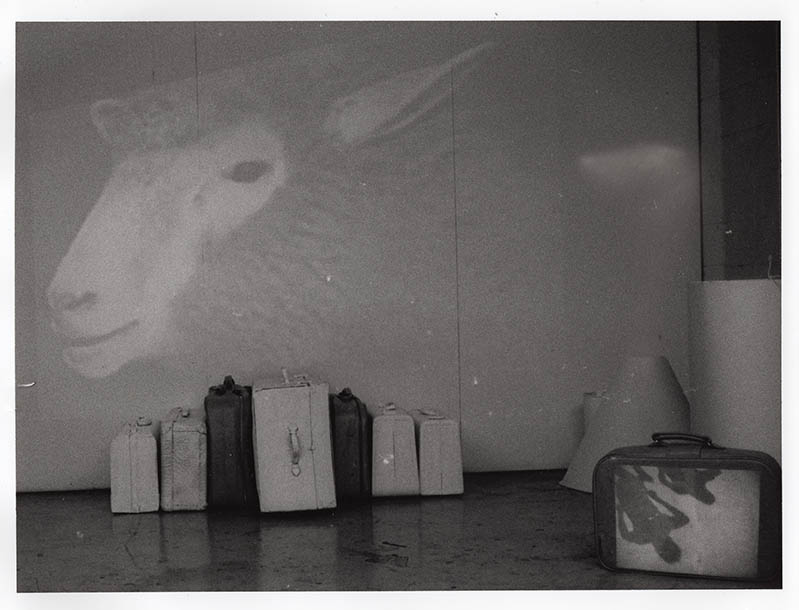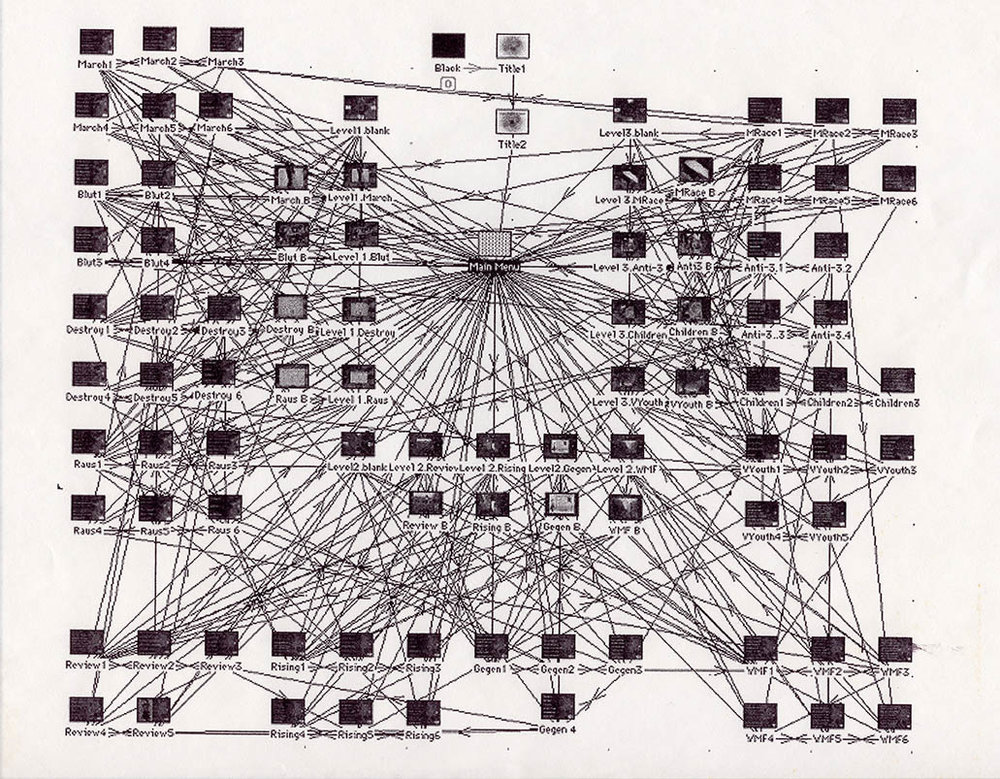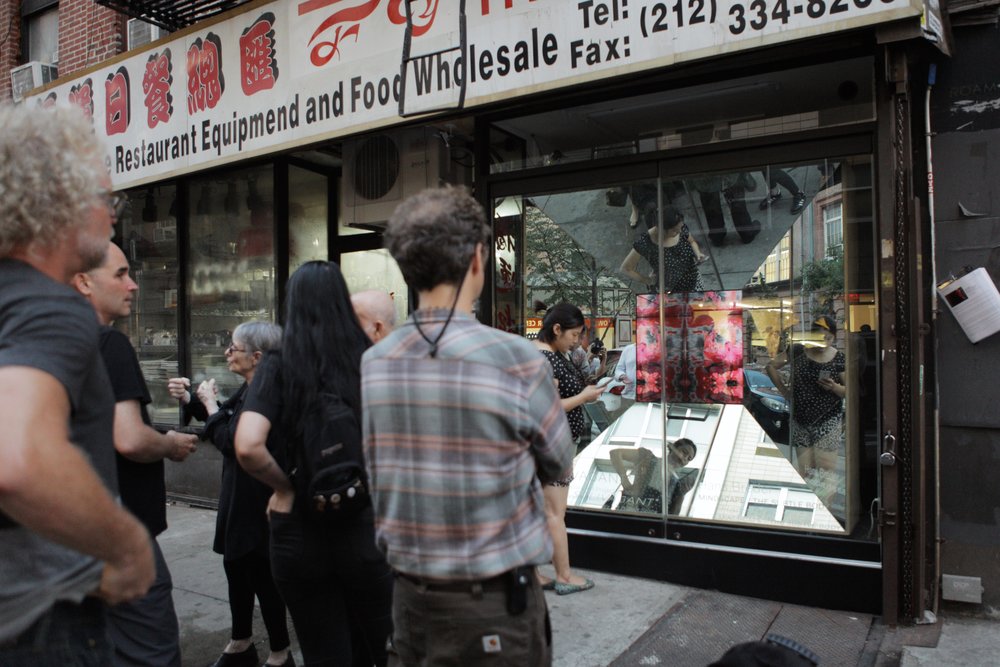INTERMEDIA
In October 1967, five years after Artforum published its first issue, I sat next to Marcel Duchamp (quite by accident) while Jean Tinguely presented his Rotozaza No. 2 as part of the Second World Congress on Communication in a Changing World at NYU. I had just created the first graduate program for the study of intermedia, at the University of Iowa. I remember being hyperaware of being in the room with Duchamp and Tinguely, two artists who embodied concepts that I wanted to imbue with new meaning.
My program conceived of intermedia not as an interdisciplinary fusing of different fields into one, but as a constant collision of concepts and disciplines. It was performance-oriented, and video was an inherent aspect. Although initially used in a documentary mode, video almost immediately became an integral aspect of many student performances and was soon used as a medium in its own right. In my work, I was completely drawn to the world of new media. In Ursonate, 1986, I worked with the Apple II computer and a software program, Smooth Talker, to have the computer perform Kurt Schwitters’s 1932 phonetic poem of the same name. The video Under a Malicious Sky, 1987, and the intermedia performance Mass in A-Minor for Suitcases, 2000, are both performative, using multiple video sources and improvisational editing. In these two works, I used ethnographic elements from my childhood in World War II era-Germany as material for meditations on a historical moment of malevolence.
Digital technology allows me to excavate new worlds of microcosmic event horizons. In Herodias, 2011, I am for a dematerialization of content by entering into the microstructure of sound and imagery; I seek the immaterial or what in physics people speak of as ephemeral phenomena that cannot be reduced to mere things. The radically microcosmic experience creates an effect that is at once both abstract and real.
–Hans Breder, Media Study, Artforum, September 2012

From Mass in A-minor for Suitcases, 2000 |

programming map for The Nazi-Loop, CD-ROM, 1996 |

Mindscape, 2015 (storefront installation at Solivigant, NYC) |
|
Mass in a-minor for suitcases In Under a Malicious Sky and Mass in A-Minor for Suitcases (2000) ethnographic elements from Breder’s childhood were retrieved in order to serve as meditative elements for reconstructing a historical moment of impending political maliciousness, one that was part of everyday consciousness during the period. |
the nazi-loop The Nazi-Loop ponders the horror of the Holocaust and the social diseases which characterized it: ethnocentrism (belief in the inherent superiority of one’s own group and contempt for other groups and cultures), xenophobia (fear and hatred of foreigners), and anti-Semitism. Images and text from Weimar and Nazi Germany are woven into a complex montage which includes representations of contemporary neo-Nazi propaganda and that of its oppositional resistance. Also woven into this montage are essays by social thinkers which reflect upon the meaning of the horrific historical moment of the Holocaust. This project operates on many levels. It argues that the obsessive ethnocentrism, xenophobia, and anti-Semitism of past times and other places is cyclical and present here, now. The Nazi-Loop is available on the Internet Archive. Read essays contained on The Nazi-Loop by Hanno Hardt, Herman Rapaport, and Rüdiger Scheidges. Read a review by Christiane Paul, “From Terminal to Terminator,” Intelligent Agent, Vol. 2, No. 3, 1998. |
Mindscape “Art has long been understood as a kind of magical, wishful thinking, and it is no more magically wishful—and hopeful–than when it is made in the desperate belief that it is healing, above all that it can heal the suffering body, or at least anesthetize both viewer and artist to its pain. I think this is the motivation behind the idealization of the body in classical art, and I think it is the motivation of Hans Breder’s Mindscape/The Subtle Body, a video installation in the window of the small, hip Solivagant Gallery on Orchard Street in Lower Manhattan….For him the energy not the body is eternal. It may be a futile effort, but Breder’s chakras works are a tour de force demonstration of the omnipotence of artistic thought, not to say its mystical wisdom at its best.” |